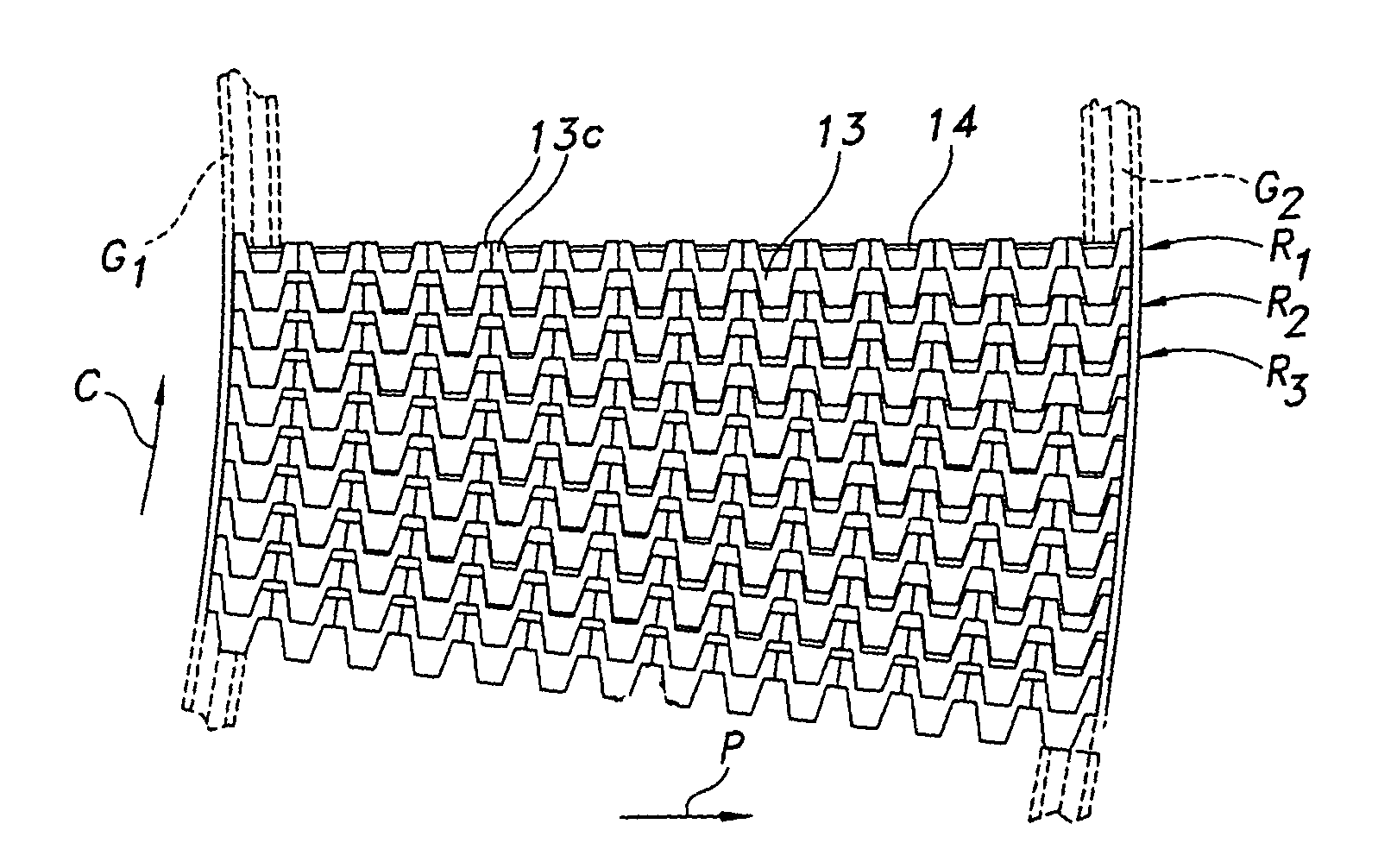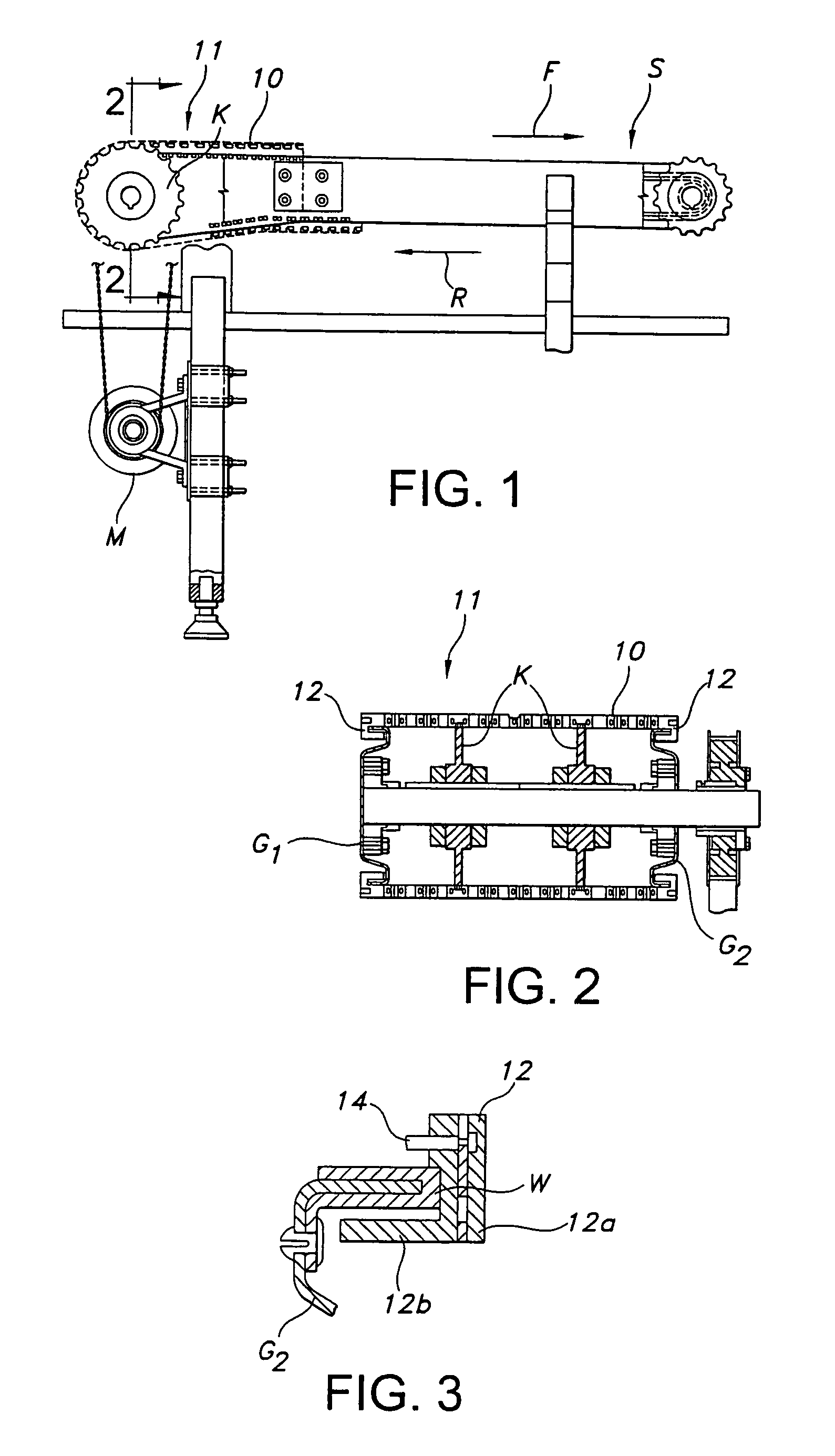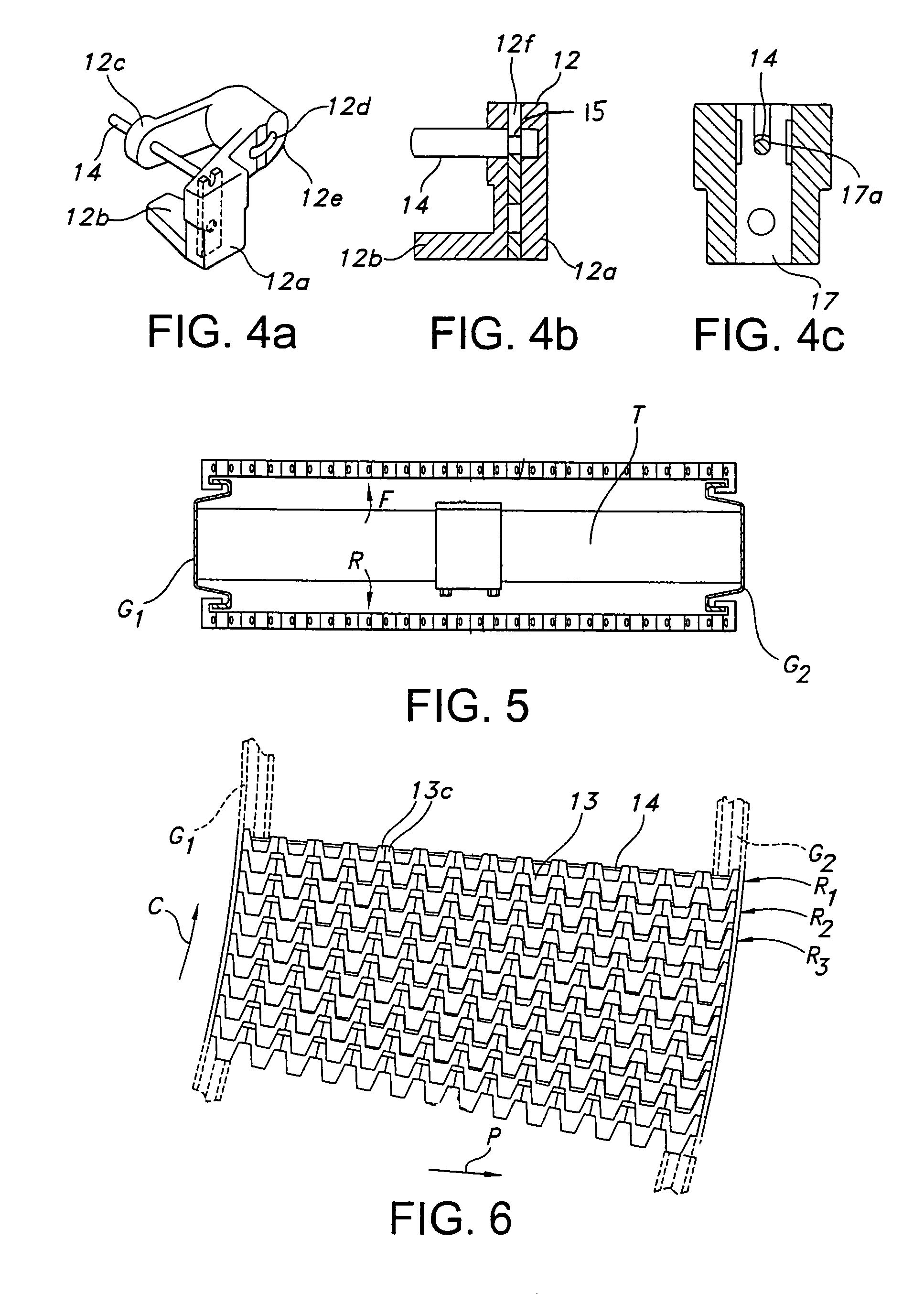Wear-resistant connector for a modular link conveyor belt
a technology of modular link and connector, which is applied in the field of conveyor art, can solve the problems of unfounded concerns about the cleanability of the belt, accelerate wear, and not be as strong resistance to significant shear load, and achieve the effects of enhancing wear resistance, reducing friction, and improving the cleanability of the first par
- Summary
- Abstract
- Description
- Claims
- Application Information
AI Technical Summary
Benefits of technology
Problems solved by technology
Method used
Image
Examples
Embodiment Construction
[0029]Reference is now made to FIGS. 1 and 2, which depict an overall conventional arrangement of a conveyor system S including a belt or chain 10. The chain 10 includes a conveying surface 11 for engaging and supporting articles. In this particular embodiment, the chain 10 comprises or includes modular links including side guide links 12 and intermediate links 13 arranged in spaced apart rows (see FIG. 6 and note rows R1 . . . Rn), which thus partially create the conveying surface 11. Adjacent rows R1, R2 of links are interconnected by transversely extending connectors 14, which are also referred to in the vernacular as “cross rods,”“hinge pins,” etc.
[0030]With regard to the side links 12, and as perhaps best understood by viewing FIGS. 3 and 4a-4c, each may include an outer depending arm 12a and an inwardly projecting or extending transverse tab 12b (thus creating different right handed or left handed side links, depending on the particular positioning). When present, the dependin...
PUM
| Property | Measurement | Unit |
|---|---|---|
| temperature | aaaaa | aaaaa |
| diameter | aaaaa | aaaaa |
| temperature | aaaaa | aaaaa |
Abstract
Description
Claims
Application Information
 Login to View More
Login to View More - R&D
- Intellectual Property
- Life Sciences
- Materials
- Tech Scout
- Unparalleled Data Quality
- Higher Quality Content
- 60% Fewer Hallucinations
Browse by: Latest US Patents, China's latest patents, Technical Efficacy Thesaurus, Application Domain, Technology Topic, Popular Technical Reports.
© 2025 PatSnap. All rights reserved.Legal|Privacy policy|Modern Slavery Act Transparency Statement|Sitemap|About US| Contact US: help@patsnap.com



